Podcast: Download (Duration: 34:10 — 31.4MB)
Get Notified Of Future Episodes Apple Podcasts | Spotify | Amazon Music | Android | Blubrry | Gaana | TuneIn | Deezer | Anghami | RSS | More
Podcast highlights:
02:05 – Challenge defined
02:30 – A mistake to avoid when doing a challenge
04:18 – The place to start
06:14 – The timeframe for a challenge
09:07 – The GAP
13:17 – Shorter or longer?
14:40 – How to come up with a challenge
16:52 – If you don’t have a big email list…
18:36 – How organic marketing helps
19:35 – A ninja strategy to increase signups
20:36 – Your email content
22:26 – What happens when the challenge is finished?
24:27 – Conversion numbers to expect
25:08 – 5 secret triggers
31:15 – The value of retargeting ads
Inject new life into your business with one-on-one coaching from James Schramko. Click HERE
Transcription:
James: James Schramko here. Welcome back to SuperFastBusiness.com. On this episode, Episode Number 589, I’ve brought along a special guest to talk about how to use challenge marketing to grow your email list and make sales. Welcome to the call, Zach Spuckler. How are you?
Zach: I’m doing great. Thanks so much for having me.
James: Well, it’s the least I could do. Recently, you actually hosted me on HeartSoulHustle.com, which is your podcast and website. And we were talking about making an offer that converts. So I was quite intrigued with some of the other things you had on your website there. And it seems you’ve got some experience with running challenges, which we should explain what they are, of course, in a moment, but would you mind just sharing with me how you came about doing challenges in the first place?
Zach: Yeah, absolutely. So I first started doing challenges about two years ago, when I had a friend tell me a little bit about how they had run a five-day challenge to market one of their online courses. And I was really intrigued by the idea of using a five-day challenge as a launch versus something like a webinar or an email-based launch, because It gave me a lot of opportunity to interact and engage with my audience.
And fast forward a few months, we did our first challenge launch. And we started testing and tweaking and changing things. And we ended up with a kind of replicable system in our hands that allowed us to run challenges that are really profitable.
James: Right. So how would you define a challenge?
Challenge defined
Zach: Yeah, so we define a challenge as five days of content followed up by a weekend or several days of sales. So usually, you start on a Monday, you deliver free content Monday through Friday, and then on Friday, through either Sunday, or in some cases, even Friday to the following week, you offer people the opportunity to pay to work with you.
James: Right. And you mentioned in some of your material, there’s something you absolutely must focus on when you’re creating a challenge. It’s a mistake that some people make. Perhaps you could share what that might be.
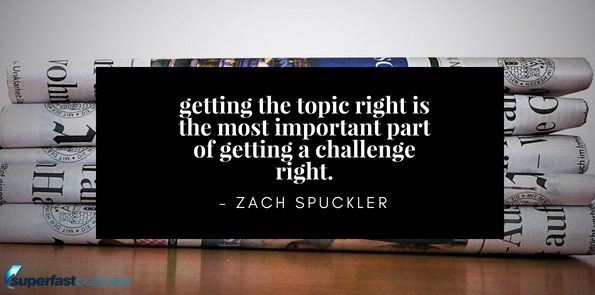 A mistake to avoid when doing a challenge
A mistake to avoid when doing a challenge
Zach: Yeah, well, the biggest thing that people tend to miss when they do their challenges, they mess up the topic. And getting the topic right is like the most important part, in my opinion, of getting a challenge right. I can usually tell with my students if their challenge is going to be a success or not just from the topic. And generally speaking, you want to make sure that the topic is related to what you’re going to sell in the simplest terms. So if you decide that you want to do a five-day challenge on say, clean eating, you don’t want to do the five day clean eating challenge, you want to do five days to get back your energy, sleep better and lose up to a pant size.
You really want your topic to be focused on an outcome, not on what you’ll be challenging people to do. And this is for two reasons. One, from a copywriting perspective, people don’t really like to be challenged in most niches. They like the idea of a challenge, they might like the idea of going through a challenge. But from a copy perspective, people don’t like to be challenged. So saying, “the five day clean eating challenge,” doesn’t necessarily appeal to people the same way as an outcome-based marketing would.
The second reason is that outcome-based marketing is a lot easier to market. So it’s a lot easier to say, “Hey, join my challenge, where you’ll sleep better, eat better and possibly lose weight,” than it is to say, “Join my challenge on clean eating.” It’s more appealing, it’s more sexy, if you will, that’s what people want. They want to know what they’re going to create. So the vital component is making sure you have a topic that people are excited about.
James: Right. So is that really the starting point? Deciding, it might be like, OK, I want to get some more leads, I’d like to sell some more of my product or service or program, I’m going to put a challenge at the start of that. And I’m going to pick a topic on something that I could deliver a result for a customer in a short period that engages them. And a part of this will come into play, but I imagine they’re going to share this and do some of our marketing for us.
The place to start
Zach: Yeah, absolutely. So you definitely want to start with the topic, but you also want to start with the end in mind.
“Start with the end in mind.”
So let’s say if we go back to like, we just stick with this clean eating example, let’s say that at the end, you have a $200 clean eating boot camp where you’re going to help people clean up their diet over the course of four weeks. Well, you want to make sure that your topic and the content of your challenge sequentially leads to wanting to work with you on a continual basis.
So the challenge topic itself, generally speaking, starts with a problem that your audience has. And this is very similar to what you actually talked about when we had you on our show, which is, you have to start by paying attention to the problems that people already have. So most people aren’t running around saying, ‘oh, I’ve got a major clean eating issue.’ They say, like, ‘I’m not sleeping well, I don’t feel good, I feel bloated, I don’t feel as thin as I used to.’ So your topic is the place to start, because really, it’s starting by serving a need in the marketplace that people have. Then the content of your challenge is based around what it is that you’re trying to sell at the end.
So just continuing with this example, maybe over the course of five days, you teach them the concepts of eating clean, what eating clean can do for them, you give them a super simple one-day meal plan, you kind of help them get that initial bloat gone. Maybe you get them one good night of sleep, and then they’re excited to move into the next step, which would be joining your paid program.
James: Nice.
So a couple of questions this sort of leads me to is, from the time we decide a challenge is something we want to try, what sort of time frame might we expect for the challenge to be happening? And what sort of things do we have to put in place to make it work? Like, what are the things we have to build for it?
The timeframe for a challenge
Zach: Yeah, so the time frame for a challenge? That’s a great question. The challenge itself is five days, Monday to Friday, and then the sales is anywhere from 48 hours to five to seven days. So the challenge itself is about a week to two weeks of your life. But leading up to that challenge, you probably want to give yourself about a month to plan everything out. And after your challenge, you want to give yourself at least a couple of weeks to kind of decompress. If you’ve ever done a launch before and you’re listening, you know that launching, it’s fun. It’s thrilling, it’s exciting. But above all else, it is exhausting. So you don’t want to kill yourself trying to do these challenges back to back to back. So you want to give yourself at least a couple of weeks on the backend to kind of recharge. But to bring it back to what you do beforehand, you want to be doing some marketing before your challenge ever starts on what your challenge is.
So let’s just keep going with this example, because it’s working for us. Let’s say you’re doing that clean eating challenge. Well, you might want to write a blog post on your website about why clean eating is important. If you have a podcast, maybe you do an episode where you talk about the principles of clean eating. Maybe you send your list a newsletter, where you talk about what happened to you when you started implementing clean eating. And really what we’re doing is kind of conditioning our audience to be ready for the challenge that we have coming up.
So you want to spend maybe two to six weeks depending on what the size of your audience is, how much content you got to give, really priming people to be excited. Then you want to spend about one to two weeks actually promoting the challenge. And what you need for the challenge is a sign-up page with something like Leadpages or another landing page service, and an email autoresponder. We personally love Convertkit as a great starting point, but you really want an email autoresponder and you want a landing page service.
Then once the challenge itself starts, every single day, you’re going to email people an assignment. You’re going to do a Facebook Live, that communicates to them either more of what you put in your email or an additional lesson or learning experience that could further develop the way they’re going through your challenge. And then, of course, you want to drive them into a Facebook group. And we use a Facebook group with all of our challenges because it’s a great way to foster community.
So I know I just threw a ton out there. So just to kind of recap real quick: you want to give yourself two to six weeks of lead time for the challenge. And the challenge itself is done via email and Facebook Lives that you do with a Facebook group.
James: Right. And of course, there’s a couple of sign-up and thank-you pages and a few other bits and pieces, like you, might need some ads or creative copy.
Zach: Exactly.
James: So we’re communicating the clear and measurable outcome for the challenge. There’s something essential that has to be missing, I guess, in part of this process. Do you want to talk about that?
The GAP
Zach: Yeah. So I think what you’re referring to is like, the gap. And the easiest way to explain what we call the gap is, it’s where your customers are right now versus where they want to be. There’s this gap, they don’t know how to get there.
And so I always tell people, we’re not withholding information. It’s not like you’re doing a challenge and you’re withholding information in an effort to get people to buy. But rather, you want them to see that you have the answer to get them from where they are now to where they want to be.
So what has to be kind of missing from your challenge is the content that shows them exactly how to get from point A to point B. The content that you give them shows them they have the ability to get from point A to point B, that you’re the right person to get them from point A to point B, but it doesn’t give them the roadmap.
“How to get from point A to point B”
So the daily actions are showing them what they need to do, they’re giving them daily confidence. But at the end of the day, the kind of how to of like, how to actually implement this into your daily life, if it’s the clean eating, like the how to of how to eat clean on an ongoing basis, how to make this a part of your everyday life, that sort of stuff doesn’t go into the challenge.
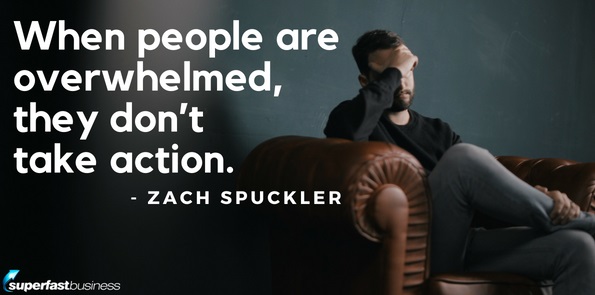 And here’s the thing, a lot of times people are like, Well, if I’m not showing them all the how-tos, or I’m not putting all that in there, aren’t people going to be, you know, upset or frustrated? And the reality is, if you put all that stuff in there, you just overwhelm people. And when people are overwhelmed, they don’t take action. So really kind of taking back that information and keeping it out of the challenge is what allows you to actually move people through it. So set a different way, if you try to pack everything into five days, what happens is you overwhelm your audience, and they don’t take any action. By taking a lot out of the five days and keeping it really simple, you get people to start taking daily actions, which creates belief in themselves, and you start getting them simple results, which creates belief in you.
And here’s the thing, a lot of times people are like, Well, if I’m not showing them all the how-tos, or I’m not putting all that in there, aren’t people going to be, you know, upset or frustrated? And the reality is, if you put all that stuff in there, you just overwhelm people. And when people are overwhelmed, they don’t take action. So really kind of taking back that information and keeping it out of the challenge is what allows you to actually move people through it. So set a different way, if you try to pack everything into five days, what happens is you overwhelm your audience, and they don’t take any action. By taking a lot out of the five days and keeping it really simple, you get people to start taking daily actions, which creates belief in themselves, and you start getting them simple results, which creates belief in you.
James: OK, so it is important that they get a result, right? It’s not just theorizing here. We’ll let you hold the surfboard, but we’re not going to go down to the water and paddle on it, you know? Like, they’re actually doing something?
Zach: Exactly, they need to get some kind of results. And if we continue with the clean eating example, like, it’s the difference between giving them a three-day meal plan and saying, “I’m going to teach you how to use clean eating, how to prepare meals, how to meal prep, how to use exercise to get better results, how to create your own meal plans, how to go grocery shopping…” It’s, we can take all of that by just giving them, here’s a simple exercise, here’s a one-day meal plan, right? It’s the difference between saying “Take this one little step,” and, “Here’s everything you need to achieve the results you want.”
James: Is it like the person standing outside the food store with a little sample and a toothpick to say, ‘look, here’s an example of what kind of taste you could have.’ You know, if you like this and you want more, then we got a whole bunch of other things inside there, and we can even teach you how to cook it and all of this stuff. It’s just like a baby step.
Zach: Yeah, I would say it’s exactly like that. The only difference being that you’re not just giving them a taste of what they can get. There are still small results, but you’re also doing it in a way that gives them belief in yourself. Because I kind of think that there’s two major objections you have to overcome with any product that you sell which is: do they believe that this is the right product? And do they believe that they can get the results with that product?
So you’re giving them a taste of the product everyday, just like you would a sample, but you’re also giving them the ability to believe in themselves everyday, which is huge when at the end of five days, they can go well, ‘my gosh, I just ate clean for five days. I can do this. And this person helped me.’ So this is the next logical step, is to continue to work with them.
James: Somewhere in the world right now, someone’s listening to this in a health food store, and they’re a clean eating expert, and they’re rubbing their hands with joy. It’s like you’re giving them a blueprint.
This is good. So why five days? Can you do a challenge over two days, or one day or 30 days? I’ve seen actually, one of my most successful clients in an eating health-type capacity has a 30-day challenge.
Shorter or longer?
Zach: Yeah, you can definitely go longer. The thing that I like about five days is that it’s very accessible to most people. And when you start to do things like seven, 10 or 30 day challenges, don’t get me wrong, they work great. But you start coming up against things like, how do you retain people, right? How do you keep people retained over the course of 30 days? How do you keep them engaged over the course of 30 days?
And there’s absolutely things that you can do. But it’s going to take a little more effort, it’s going to take either a little more marketing effort, a little bit more engagement effort. Even doing like, a seven-day challenge, what we find a lot with our students is that they lose engagement on Saturday and Sunday, which is normal. People don’t want to be part of a challenge on the weekend. They want to go live their life, so to speak.
So we’ve seen really great success with people running three-day challenges, as well, and we’ve also seen really great results with 30-day challenges. I like to tell people, “Look, five days is just a great place to start. It’s a full week, it gives you enough time to really connect with an audience. But it’s short enough that it’s not going to drain you mentally and emotionally. And it’s not going to require you to do an excess of work to keep people retained and engaged.”
James: How do you come up with ideas as to what you could make the challenge about? Let’s say you have a business coaching membership, it’s say, 1500 or 1600 dollars a year. What could you do over three or five days that help someone get a result, that gives him a flavor of that? How do you brainstorm an idea?
How to come up with a challenge
Zach: Sure, I think there’s two things that I do. Number one is I ask myself, what problems are my audience currently experiencing? And it kind of comes back to that. So let’s say you are in the business coaching niche, what is one of the biggest problems that your audience has? And the second thing I would look at is, what is something that my membership promises, like what’s the big promise of my membership?
So let’s say that your membership works mostly with people who are consultants, coaches, maybe course creators, and their biggest struggle is they’re like, I just need a steady flow of clients, right? Well, then I would say, OK, the problem is, they need a steady flow of clients. My program helps you generate more leads, more sales, more growth, which in a way is getting more clients. I would probably do a free five-day challenge called “Five Days to Your Next Consulting Client”.
Now, you might be saying, well, their biggest struggle is they need a steady stream of clients, not just one. But people who are struggling to get a stream of clients are like, ‘I just need that next client.’ That’s kind of the mindset that I know they’re in. So if I say, “Hey, over the course of five days, I’m going to get you your next client,” well, what I’m actually doing is, I’m helping you land a client, but I’m proving, number one, I actually have the systems and the structure to get you a client, and you have the ability to land a client.
So this is just the intro stuff, do you really want to learn how to build your business, scale your business, take it to the next level? And maybe over the course of five days, we actually just help them book a discovery call. Like, that’s where things end. And we say, inside the membership, we teach you how to close discovery calls with confidence, we teach you how to create your packages, we teach you how to actually communicate with a new client. And all of that is waiting for you inside of my membership. So it’s a combination of what is their problem, and what is the big promise of what I’m offering.
James: Right. So you’re teaching them to fish.
Zach: Exactly.
James: What would you do if you don’t have a big email list? If emails are a big part of this, you’ve only got a tiny list, which I know is the situation for some people, especially if they’re in the early phases. Can you get enough traction from a small email list?
If you don’t have a big email list…
Zach: Yeah, you can definitely get traction from a small email list. We’ve seen people do really, really well with their challenges with email lists that are in the few hundreds. You don’t need tens of thousands of people to be really successful with this.
But my answer is always, look, I’m a huge advocate of Facebook ads. And I think Facebook ads are a great way to get your challenge filled up. Now, they’re not like an all-in-one, solve every problem you have. They require work, they require knowledge, they require a little bit of learning. But I think Facebook ads are amazing because, you know, name one other platform where you can pretty inexpensively, and with just a little bit of knowledge, go out, know who your audience is, tell Facebook you want to get in front of them and meet people where they already are.
Like, yeah, there’s things like LinkedIn ads, or Google AdWords. But those require a lot of education, a lot of refining, they’re very niche platforms, if you will. Facebook, you could Google how to set up a Facebook ad. And you could find stuff on YouTube and have an ad up and running, like literally in the next couple of hours. And I’m, I feel pretty confident saying that.
So I think it’s two things. One is recognize that, you know, there really is no audience too small, just getting started is the key.
“Just getting started is the key.”
And then number two, you add in Facebook ads, and you can actually build challenges as a way to start to build up your email list. And that’s something that we’ve done with our challenges, is we heavily promote them with Facebook ads, so that we’re not just selling our products, we’re building our email list as well.
James: You also talked about organic marketing on your website, how does that play into a challenge?
How organic marketing helps
Zach: Yeah, you know, I tell customers and clients all the time that sometimes we just devalue the power of organic marketing. And ask yourself, the last time you did something like a webinar, or if you’ve tried a challenge before, did you really intentionally every single day leading up to it for seven to 10 days before, did you really intentionally post content driving people back to your challenge? Did you really, intentionally, put things out on Instagram and Facebook on a consistent basis? Because when you do that stuff, you do attract leads. Like, the reality is, if you’re listening to this, and you’ve been in business for more than six months, you’ve got an audience. And they might be people who are connected to you on Facebook, they might be people who are connected to you on Instagram. But if you’ve been putting your message out for really any short period of time, there’s people paying attention that are just waiting for the opportunity to work with you. And you need to get that message out there organically.
A ninja strategy to increase signups
So one of my favorite strategies, and I use this strategy sparingly, and I’ll explain why in a second, but is to create an event on Facebook for your challenge and to invite people that you think would actually and genuinely be interested in joining. I’m not talking about setting up a Facebook event and hitting Select All and inviting all of your friends. I’m talking about taking the time to intentionally go through people you’re connected to and say, who’s a good fit for my challenge? And inviting them to a Facebook event that links back to the challenge. It’s just, “Hey, I’m running this free challenge, it starts Monday, click here to register,” can be incredibly effective. However, it’s not effective if you do it like, every five days, right?
I think we’ve all seen where somebody runs a Facebook event like, every single week, inviting you to join their webinar. I don’t think that works. But I think using it sparingly and intentionally can be a really great kind of ninja strategy, if you will, to get extra people signed up for your challenge.
James: Cool. So if we’re on board with this idea that we’ve got our own audience, we can fill our funnel a little bit with some Facebook ads, and we should do organic marketing, sounded a little bit like what I do with content marketing on a regular basis. What would the emails look like that we’re actually sending out? I’m sure you’re going to send a few. And what would they say?
Your email content
Zach: Yeah, so the emails that we would send out every single day, they do two main things. Number one, they have an assignment that gives people something to do the actual action to take on whatever content I’m providing them that day. And then number two, it gives them a call to action to actually head over to Facebook and engage with us inside our private community. The rest of it is just content, so to speak. So let’s keep going with this business example, how to land your first client in five days.
Well, let’s say on day one, it’s actually about setting up a calendar page so that someone can book a discovery call. So on day one, I would say, “Hey, it’s day one of the challenge. Today we’re talking about how to book sales calls. A sales call is XYZ and this is why it’s important to book them. And your assignment today is to head over to Calendly.com, get yourself signed up with a free account, and tomorrow we’ll actually set up your booking link. And then once you’ve done that, click here to head over to Facebook. And let me know in the comments that you set up your account, and tomorrow we’ll be on to the next thing.”
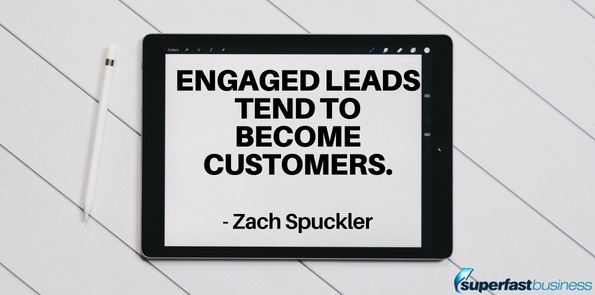 That’s kind of the content of the email, it’s content, action, content, join the Facebook group. And it’s just a way to get them taking action, which is a great way to kind of build up micro actions, which you know, leads them to being more likely to buy your product, and getting them into that Facebook group, which is the great way to get them engaging, because engaged customers or engaged leads tend to become customers.
That’s kind of the content of the email, it’s content, action, content, join the Facebook group. And it’s just a way to get them taking action, which is a great way to kind of build up micro actions, which you know, leads them to being more likely to buy your product, and getting them into that Facebook group, which is the great way to get them engaging, because engaged customers or engaged leads tend to become customers.
James: I’m just curious, what do you do with the Facebook group after you finish the challenge? Because I’ve got to say, as someone who’s not on Facebook that often, who has resisted having a Facebook group for the whole time they’ve been around, it just seems like the last thing I want to do is to be opening up a group and managing a swarm of people. And then what happens when the challenge is finished, do you just keep reactivating that group each time you do a challenge, or was it a one-shot deal? Or do you switch it off?
What happens when the challenge is finished?
Zach: Yeah, that’s a great question. So we treat it as a pop-up group, meaning it pops up, you get to interact with it, and then it goes away. That’s it. And you can absolutely kind of open and close the group if you will. Like, it’s open, and people are able to join during the challenge. And then you archive it and close it when the challenge isn’t happening anymore. That works really, really well.
The thing that I want people to know is like, Look, there’s just so much value to building a community, even if it’s only over the course of seven days. And when it’s over, you now have this group of people who maybe didn’t buy your products, but they’re engaged. You get the opportunity to give them a call to action, like, ‘hey, come join me on Instagram. Come join me over on my Facebook page. This wasn’t a great fit for you? No worries, I’ve got this other webinar coming up next week.’ And you can move people into the next logical step of your business. But I have a ton of people I work with that are like, I don’t want a Facebook group. I don’t want to build a Facebook group. You can absolutely open it, engage with it, and then close it back down.
You could, if you really wanted to, do an entire challenge without a Facebook group and just drive people to your page. But I just think there’s so much value to creating a community where people feel like their community’s being fostered.
James: Yeah, I like the fact that you can turn it off.
Zach: Yeah.
James: That’s good. And you can direct them somewhere else if they weren’t a good fit. OK. So I actually recorded a couple of podcasts with Diana Tower, who specializes in Facebook community management. So that would be a good episode to go and listen to if you’re interested in the Facebook stuff.
OK, so we’ve got this sort of strategy of sending out the emails, you’ve given us a good recipe for that. We talked about promoting it. I’m interested, like, what sort of conversions might we expect on these things?
Conversion numbers to expect
Zach: Yeah, so typically, you should expect a two to 3% conversion on entirely cold traffic, and a four to 6% conversion on warm traffic. That’s kind of like the gold standard numbers. You can get as high as four to 5% on cold traffic, but we tend to see that in like the more niche markets. Like, we’ve got somebody who does dog training, and it tends to be when they have a mix of warm and cold in a niche market, you get closer to like four to 5% conversion.
James; Nice. Now, we’ve covered quite a lot, but I am interested in your five secret triggers, if we could open the box on that one. I think that would just be a good checklist to round up on, and then I’ll ask you one more question.
What are the five secret triggers, if you’re keen to share those, that we really should make sure are on our checklist?
5 secret triggers
Zach: Yeah, absolutely. So number one is Facebook ads that are specifically based on behavior. So we want to target people based on the way they’ve engaged with our content. When we’re doing our daily live streams, we want to run those as an advertisement to people that have actually signed up for the challenge. We also want to retarget people who signed up for the challenge, but maybe didn’t make it to the sales page. And we want to retarget people that have seen the sales page but didn’t buy.
So using retargeting ads on Facebook is one of the secret triggers, because they’re cheap, they’re effective, and they really get you in front of the right people.
The second secret trigger is live videos that are designed to create growth. And what I mean by that is, every day of the challenge, we do a live video. But we also give people the opportunity to sign up for the challenge, even though it’s already started. So we say, “Hey, miss anything? No worries, click here. Join the challenge, and you can meet us where we are right now.” We can see anywhere from an additional 15% to 25% signups to a challenge just by saying on the video, “Hey, we’re in the middle of our five-day challenge, if you want to get in on this, just click here.” And that gets us even more signups. So yeah, that’s the second one.
The third one is really strategic sales sequences. So here’s the thing – I tend to be of the school of thought that you can be aggressive in your follow up, meaning send a follow-up email every day, if you truly believe in your products. Like, we have a Facebook ads program, we have a challenge launch program. We really believe in our products and we know and have the testimonials to back them up. And at the end of the day, it’s OK to sell your products.
So you want to make sure that you write a couple of emails that overcome objections. And a couple of easy ways to do that are a case study. Sending out a case study email really helps people overcome objections. The second one is like a frequently-asked-questions email, just answering the questions that people don’t realize they have is a great way to overcome objections. And the third email that we always send is recapping the results. So we say “Hey, over the past week, here’s what you’ve achieved.” And we highlight the fact that, look, we just work together for a week, look at what you’ve done. And we’re trying to overcome that objection of you know, am I able to do this? So that third secret trigger is through strategic sales sequence that overcome objections, be it a case study, frequently asked questions and a results recap.
The fourth one is a strategic upsell. And you don’t have to have an upsell, but an upsell is a really great way to just generate some additional revenue. So when we did one of our challenges, we sold 104 products at $197 a piece, but we also sold 19 upsell is at $97, which means about 18% of people took us up on the upsell and we made an additional 15% to 20% or excuse me, let me try that again. Eight to 10% revenue just by adding a $97 upsell. We weren’t aggressive. All we did was said, “Hey, you just signed up for this paid training, we’ve got an additional training for $97 that can really help you skyrocket your results. Would you like to take us up on that? You don’t need this to get the results we’ve promised so far, but if you want even more, you can grab it for 97 bucks.” That’s number four.
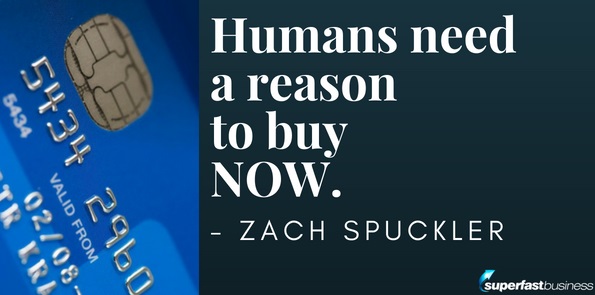 And finally, the fifth secret trigger is scarcity factors. So you need, need, need a scarcity factor. And I talk to people all the time who are like, “Well, I don’t like when something says it’s only available for five days, or the price is going up. Like, why can’t people just buy it whenever they want?” And it’s because humans need a reason to buy now. You think about your local supermarket. They have sales that run every week, but at the end of the week, those sales go away. Why? Because if the sale was always happening, there wouldn’t be any reason to go to the store this week.
And finally, the fifth secret trigger is scarcity factors. So you need, need, need a scarcity factor. And I talk to people all the time who are like, “Well, I don’t like when something says it’s only available for five days, or the price is going up. Like, why can’t people just buy it whenever they want?” And it’s because humans need a reason to buy now. You think about your local supermarket. They have sales that run every week, but at the end of the week, those sales go away. Why? Because if the sale was always happening, there wouldn’t be any reason to go to the store this week.
So when it comes to scarcity, you can do things like increase the price, you can have bonuses that disappear, you can have a cart open, cart closed. But you really need something that makes joining your program, your product, your service, your membership, a scarcity in some way. My personal favorite is to just have a cart open-close or a price discount.
And so those are your five secret triggers – you got your Facebook ads, your live videos, your sales sequences, upsells, and scarcity.
James: Yeah, interesting. You know the guest I had on the previous episode, Ryan Levesque, was talking about emailing constantly. Well, I was asking him about it. So if you believe in your product and it’s relevant to what they’ve asked for, then that does make sense.
And it’s quite funny, your story about the supermarket, because I was buying a table and chairs yesterday, and the furniture store that I went to have eliminated sales. Their whole pitch is, no more sort of sneaky pricing stuff, we have the same price all year long. And I couldn’t help but think, I wonder if that’s going to tank their overall success or not? We’ll wait and see on that one. It only happened sort of nine months ago.
But yes, some of those secrets you mentioned, I use in my own email follow-ups, especially case studies, FAQs and results. I love that power and the demonstration of what you’ve been able to achieve for other customers is a very good reference point for someone going through that challenge. So thank you for sharing that.
In fact, I enjoy listening to you talk. Reminds me of when I was listening to The Psychology of Selling by Brian Tracy back in the 90s. You have a very similar pace and easy listening voice. I don’t know if you’re from a similar region, but it just gives me memories of that. You got a good educator’s voice.
Zach: Thank you, I’ll take it.
James: Now, what haven’t I asked you that I should be asking about challenges that would round out this episode?
The value of retargeting ads
Zach: Yeah, I think if there’s one thing that we haven’t talked about or that we just briefly mentioned, it’s retargeting ads. And I would just tell people, like, from my experience, watching students go through this process, it’s the number one thing that falls through the cracks, and it’s the cheapest and easiest way to make more sales.
So if you’re going to do a challenge and you’re like, I don’t know if I’m going to run Facebook ads or I’m not sure that I’m going to do a ton with Facebook ads, that secret trigger that we talked about briefly of running retargeting ads, that is huge. And at 15 to 20 bucks a day, for most people listening, like let’s say you’ve got a few hundred people in the challenge, even at 15 to 20 bucks a day, you’re able to reach some of those people with your content messaging, your sales messaging and your follow-up messaging.
And there’s just so much value in being able to show up in someone’s newsfeed who has already expressed interest in your products, that if you don’t do anything else, you know, you do a basic challenge, you don’t run a ton of Facebook ads, at least take the time to set up some retargeting ads, because every time we do, it makes a world of difference to our overall results. It ends up it ends up generating us revenue, knock on wood, every single time that we would have otherwise missed.
James: That’s a great tip. So there’s your 80-20, is the retargeting.
Zach: Yes.
James: I think you’re one of the biggest Facebook fans I’ve spoken to for a while. They’re doing a good job for you. Hopefully you’re selling things after the challenge that have a good sustainable business that protect you from the foibles of the inevitable changes at some point.
Look, I think we’ve covered plenty on this topic, how to use challenge marketing to grow your email list and make sales. Really, the next step for someone listening would be to go and run a challenge and see how that goes.
Zach: Yeah.
James: I like how you’ve got lots of useful guides over there at your website, HeartSoulHustle.com. I’ve been speaking with Zach Spuckler, and it’s been really enjoyable learning about this.
We’ll also put together a summary guide of this episode at Episode 589, SuperFastBusiness.com. You can grab the whole transcription for this episode. And of course, we cover all sorts of related topics inside the SuperFastBusiness membership, if you want to take things to the next level. How’s that for a gap transition, Zach?
Zach: I love it.
James: Alright, well, really enjoyed this. I also enjoyed being on your show. Thank you for hosting me over there. I think we were Episode 97?
Zach: Yes.
James: Crafting Converting Offers with James Schramko, over there at HeartSoulHustle.com, and hopefully we get to catch up again.
Zach: Yeah, thanks so much for having me.
Targeted coaching, the support of experts and a wealth of business resources await you inside JamesSchramko membership
Access all our episodes by subscribing on iTunes

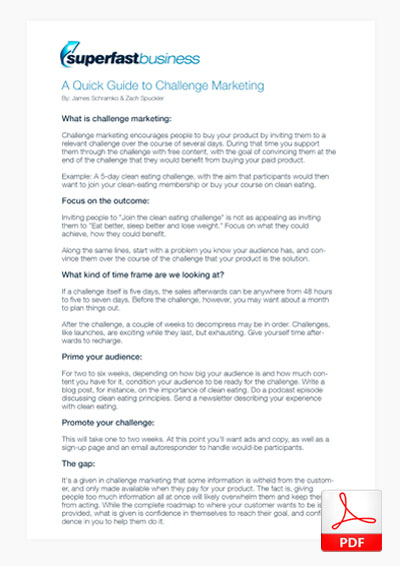
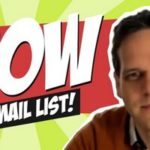


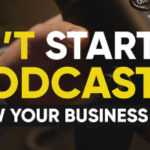





Challenges are awesome! They build engagement and create trust with your prospect. Zack is right just get started
Challenges are awesome! They build engagement and create trust with your prospect. Zack is right just get started
Right on!